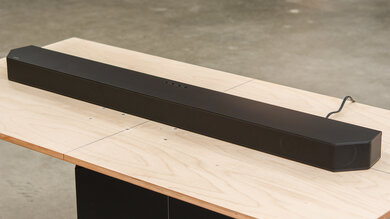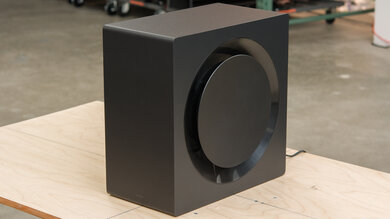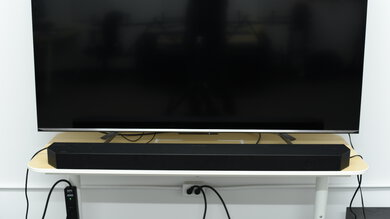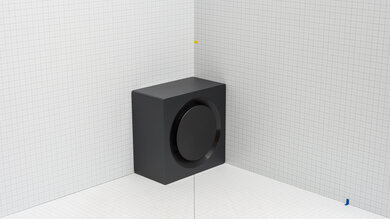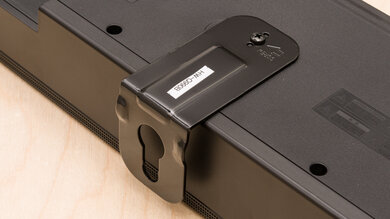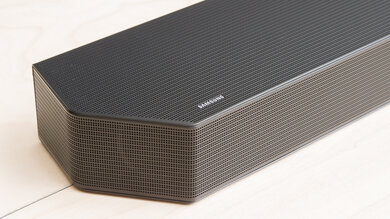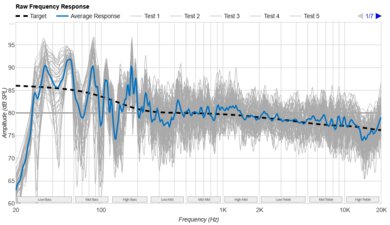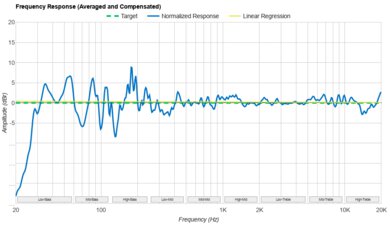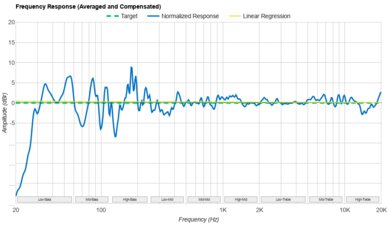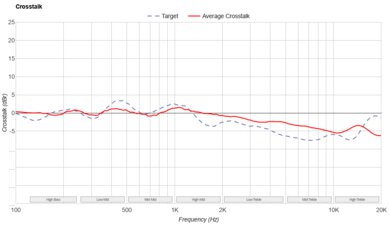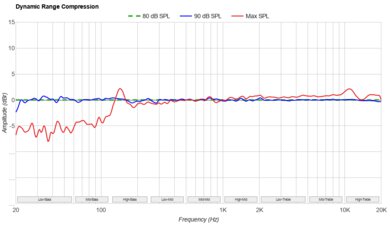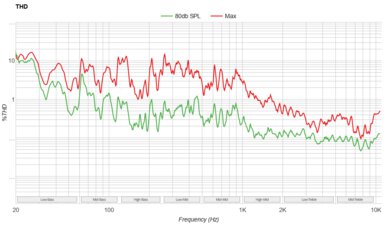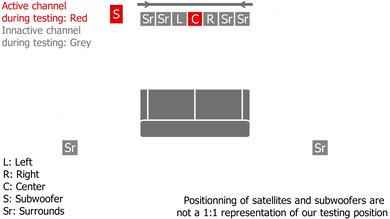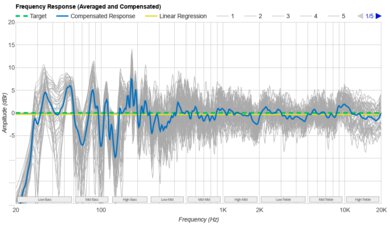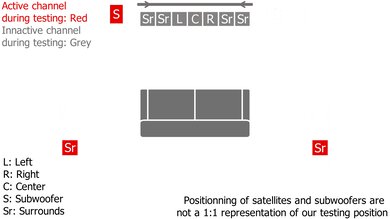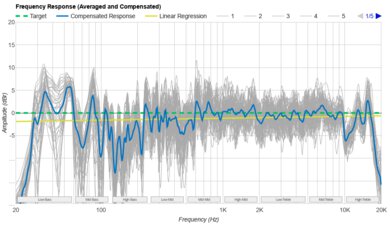The LG S75Q is a 3.1.2 setup released in 2022. It's one of the manufacturer's high-end models for the year with Dolby Atmos support, alongside the LG S80QY and the LG S90QY. It uses built-in Meridian Technology to improve audio reproduction, and you can connect it to compatible LG TVs for TV Sound Mode Share. However, it only has two up-firing Atmos drivers compared to the 3.1.3 S80QY and the 5.1.3 S90QY, and it doesn't offer more premium features like AI Room Calibration to optimize the bar's sound based on your room's acoustics.
Our Verdict
The LG S75Q is decent for mixed usage. It's a pretty versatile bar with Dolby Atmos support, though its height performance is just okay overall. Out-of-the-box, it reproduces pretty clear and accurate dialogue, and its discrete center channel enhances the quality of voices in TV shows. It lacks low bass, though, so you don't feel the rumble in bass-heavy music or action-heavy movies. Surround sound isn't the best, either.
- Dolby Atmos support.
- Some compression at max volume.
The LG S75Q is good for dialogue-centric content like TV shows. It's a 3.1.2 setup, so it has a discrete center channel that helps reproduce dialogue clearly and accurately. You can use its 'Clear Voice' dialogue enhancement feature if you want, and there's also a Night Mode feature to balance out the volume level when you watch shows at night. Out-of-the-box, its balanced mid-range means voices are clear in the mix, though they're also a bit dark due to the recessed treble.
- Good center channel performance.
- Dialogue enhancement feature.
- Some compression at max volume.
The LG S75Q is decent for music. Out-of-the-box, it has balanced mids that reproduce clear and accurate voices and lead instruments. There's a little extra boom in the high bass, and its recessed treble adds a slight darkness to the sound. You have lots of customization features on hand, including bass and treble adjustments and EQ presets. It can't reproduce the deep thump and rumble in the low-bass found with bass-heavy music like hip-hop and EDM.
- Bass and treble adjustments.
- EQ presets.
- Some compression at max volume.
- Lacks low-bass.
The LG S75Q is decent for movies. It supports Dolby Atmos content, which is often found on streaming services. The bar's height performance is decent, but it doesn't provide the same immersive experience as more premium models. There's also support for surround sound like Dolby Digital and DTS, though it has to downmix this content into stereo in order to play it. Its lack of low-bass means that you don't feel the deep rumble in action-packed scenes.
- Bass and treble adjustments.
- Dolby Atmos support.
- Some compression at max volume.
- Lacks low-bass.
Changelog
- Updated Jun 13, 2024: We've added a comparison between this soundbar and the LG SG10TY in Build Quality.
- Updated Dec 19, 2023: Added market comparison with the Samsung HW-Q600C/Q60CC in the Stereo Frequency Response box.
- Updated Nov 02, 2023: Added market comparison with the LG S77S in the Video Passthrough to TV box.
- Updated Jun 07, 2023: Converted to Test Bench 1.2. Updated the results for audio format support via ARC/eARC, HDMI In, and Optical. Added Video Passthrough to TV results as well.
Check Price
Differences Between Sizes And Variants
The LG S75Q is available in 'Black', and the label for our model is here.
If you come across another version of this soundbar, let us know in the discussions.
Popular Soundbar Comparisons
The LG S75Q is a 3.1.2 setup with Dolby Atmos support. It's a fairly versatile bar, but it's best suited for listening to dialogue-centric content like TV shows and podcasts. It lacks low-bass, and its surround sound isn't that great on its own, especially compared to more premium setups like the LG S90QY.
See also our recommendations for the best soundbars, the best Dolby Atmos soundbars, and the best LG soundbars.
The Sonos Arc is better than the LG S75Q. The Sonos is a 5.0.2 standalone bar with a premium design. It has better soundstage, surround, and Atmos performances and supports more premium features like room correction. While the LG comes with a dedicated sub, it doesn't reproduce as much low-bass compared to the Sonos.
The Samsung HW-Q600C and the LG S75Q are both 3.1.2 soundbars, and the Samsung is better overall. The Samsung can reproduce more low-bass, so you feel more rumble in the mix. Plus, it has a better performance on its height channels with Dolby Atmos content. There are some more sound customization tools, like a graphic EQ.
The LG SP8YA is better than the LG S75Q. The SP8YA is a 3.1.2 setup that reproduces a more extended low-bass, so you feel more thump and rumble in your audio. It comes with more sound enhancement features, like room correction, and it supports more wireless playback options.
The LG S80QY is better than the LG S75Q for most uses. The S80QY comes with more sound enhancement features like room correction and more wireless playback options. It can also reproduce a more extended low bass, so you feel more thump and rumble in your audio. The S75Q also supports Dolby Atmos content and is a more affordable alternative.
Test Results


